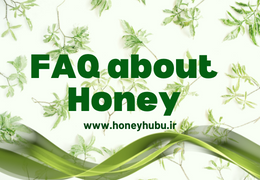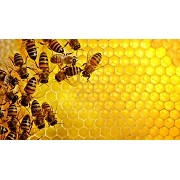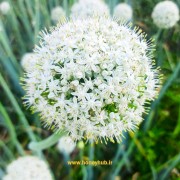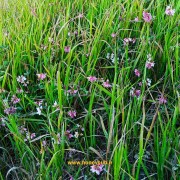در نوار شمالی ایران، جایی که دریای خزر با سخاوت، رطوبت را به دامان رشتهکوههای سر به فلک کشیده البرز میپاشد، یکی از...
Effective Honeybee Pest Prevention and Control Strategies for Beekeepers
Honeybees are vital for pollination and food production, but their survival is increasingly threatened by a variety of pests. Beekeepers must be proactive in managing these pests, not only to ensure the health of their colonies but also to support broader ecological balance. In this guide, we explore comprehensive strategies for honeybee pest prevention and control, focusing on the most common and destructive pests faced by beekeepers, and providing actionable tips for sustainable pest management.
1. Varroa Mites (Varroa destructor) – The Silent Killers
Damage Level: ★★★★★ (Extreme)
One of the most serious and widespread pests threatening honeybee colonies is the Varroa mite. These external parasitic mites attach themselves to the bees, sucking their bodily fluids and weakening them. They also serve as vectors for the transmission of several deadly viruses, such as the Deformed Wing Virus (DWV), which can cripple and even kill bees. If left unchecked, Varroa mites can decimate an entire colony within just 1-2 years.
Prevention and Control Strategies: To combat Varroa mites, beekeepers must regularly monitor the mite population. One effective method is the use of mite counting boards, which can help assess the infestation level. Beekeepers should also use natural treatments such as thymol-based products or essential oils like tea tree oil. For severe infestations, chemical treatments such as oxalic acid or formic acid can be used, though they must be applied carefully to avoid harming the colony.
Additionally, breeding resistant bees—such as the hygienic or mite-tolerant strains—has become a critical part of long-term Varroa management.
2. Small Hive Beetle (Aethina tumida) – The Fermentation Invaders
Damage Level: ★★★★☆ (Severe)
The small hive beetle is an invasive species that has spread across many parts of the world, causing significant damage to honeybee hives. The beetles lay their eggs inside the honeycomb, and when the larvae hatch, they feed on the honey, causing it to ferment. This results in a sticky, toxic mess that forces bees to abandon their hive.
Prevention and Control Strategies: To prevent small hive beetles, it is essential to keep the hive strong and healthy. Regular inspections to remove any infested combs or debris can help reduce the risk. Additionally, beetle traps placed inside the hive or around its entrance are effective at reducing beetle populations. Another strategy is the use of screened bottom boards that allow beetles to fall out of the hive but prevent bees from escaping.
Beekeepers should also consider using diatomaceous earth around the hive’s entrance, as it can help kill the beetles without harming the bees.
3. Wax Moths – The Comb Destroyers
Damage Level: ★★★☆☆ (Moderate to Severe)
Wax moths primarily target weak or abandoned hives. Their larvae are particularly damaging, as they chew through the combs, turning the wax into a web-like structure and destroying both honey and brood. Wax moths are most problematic when combs are left unprotected or improperly stored during the winter months.
Prevention and Control Strategies: To prevent wax moths, always ensure that hives are strong, active, and well-maintained. Removing weak colonies or cleaning up abandoned hives promptly can help reduce the risk. When storing combs, make sure to keep them in freezer storage to kill any moth eggs or larvae present. Another preventive measure is using moth traps that attract and capture adult moths before they can lay eggs.
Additionally, beeswax moth pheromone traps can help reduce the population of adult moths in the area, lowering the likelihood of an infestation.
4. Tracheal Mites (Acarapis woodi) – The Breath Stealers
Damage Level: ★★☆☆☆ (Moderate)
Tracheal mites invade the respiratory system of honeybees and cause a condition called tracheal mite infection, which weakens the bees and reduces their ability to forage and care for the colony. These mites are microscopic, making them difficult to detect without proper monitoring.
Prevention and Control Strategies: Tracheal mites are best controlled through regular inspections of bee health. Look for signs of weakened or dead bees and reduced brood production. The use of oxalic acid vaporization is an effective method for treating infestations. Additionally, beekeepers can introduce medicated patties or use essential oils, such as thyme oil, which have been shown to have some efficacy in treating these mites.
Maintaining a strong and healthy colony is the best defense against tracheal mites, as healthy bees are more resilient and capable of dealing with these infections.
5. Tropilaelaps Mites (Tropilaelaps spp.) – The Fast-Reproducing Parasites
Damage Level: ★★★★★ (Extreme in Asia)
The Tropilaelaps mite is a lesser-known but rapidly spreading threat, particularly in Asia. These mites feed on bee larvae and pupae, causing deformities and death. The speed at which they reproduce makes them even more dangerous than Varroa mites.
Prevention and Control Strategies: Due to their rapid reproduction rate, controlling Tropilaelaps mites requires immediate action. If detected, beekeepers can use a combination of natural treatments, such as essential oils, as well as chemical treatments like formic acid or oxalic acid. Additionally, integrating breeding programs to create mite-resistant bees can help in the long term.
As this pest is still emerging outside of Asia, it is important for beekeepers to stay informed and be vigilant about potential infestations.
Final Thoughts: Proactive Pest Management for Healthy Honeybee Colonies
Preventing and controlling pests is one of the most important aspects of beekeeping. Regular inspections, early intervention, and sustainable pest management practices are essential for ensuring healthy, thriving colonies. No single solution works for every situation, so it’s essential to employ a combination of methods and stay informed about the latest research and treatments.
Key strategies for effective pest control:
- Regular hive inspections and mite counting
- Use of natural and chemical treatments when necessary
- Strong colony management and breeding resistant strains of bees
- Proper storage of combs to prevent wax moth infestations
- Integrated pest management (IPM) strategies
By implementing these strategies, beekeepers can significantly reduce the impact of pests on their hives, ensuring that honeybees continue to thrive and play their crucial role in our ecosystem. The future of beekeeping depends on proactive, informed management practices—so stay alert, stay informed, and protect your bees!






















Latest comments